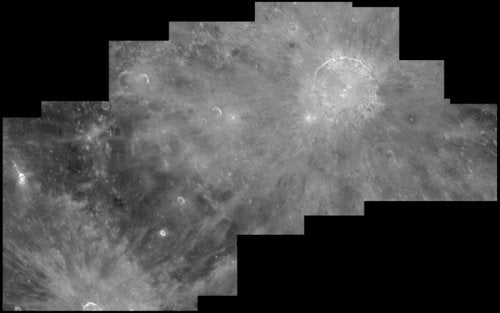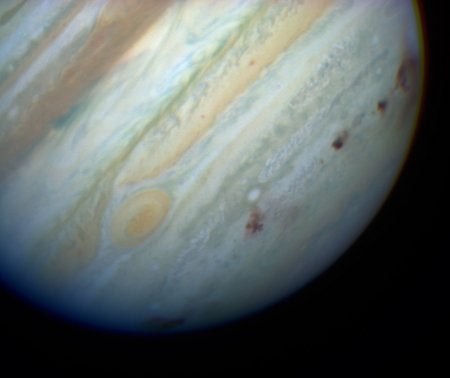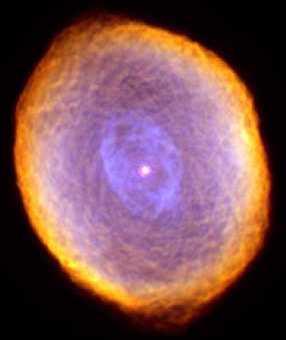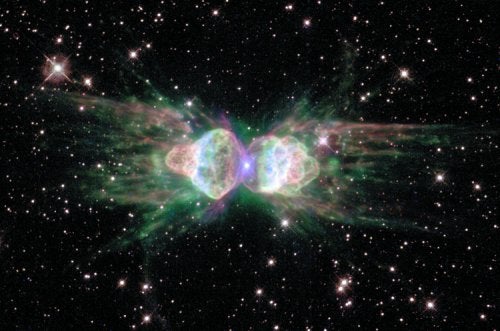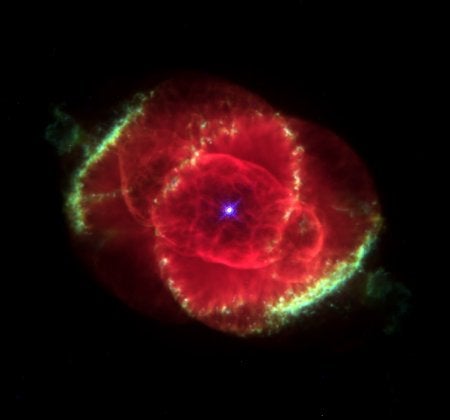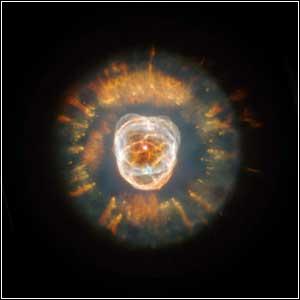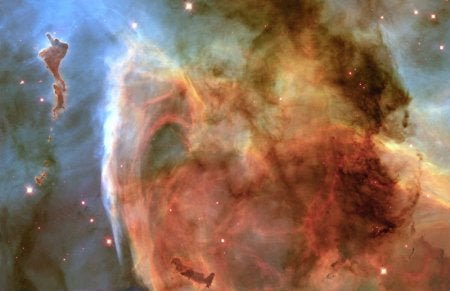The moon
Hubble doesn’t spend all its time looking at the distant universe. Here it spies on the moon and one of its most spectacular craters, Copernicus (at upper right). This 58-mile-wide crater formed nearly a billion years ago when a mile-wide asteroid slammed into the moon. Bright dust ejected from the impact site forms the conspicuous ray pattern.
Jupiter appears battered and bruised in the wake of Comet Shoemaker-Levy 9’s direct hit in July 1994. WFPC2 captured 8 of the 23 impact sites in this image, which clearly shows the dark smudges that appeared in the stratosphere above the giant planet’s southern hemisphere.
The hot star at the center of the Spirograph Nebula (IC 418) emits so much ultraviolet radiation that it causes the surrounding gas to glow. This planetary nebula, which lies about 2,000 light-years from Earth, represents the ultimate fate of stars like the sun, which eject their bloated outer atmospheres while red giants. The sun won’t reach this stage for at least 5 billion years.
This Hubble image of IC 418 is shown in a false-color. Red shows emission from ionized nitrogen (the coolest gas), green shows emission from hydrogen, and blue traces the emission from ionized oxygen (the hottest gas).
The Ant Nebula (Menzel 3) lives up to its name, resembling the head and thorax of the ubiquitous insect. But the Ant actually represents the dying gasps of a sun-like star. That star, whose remnant can be seen at the nebula’s center, puffed off its outer layers a few thousand years ago when it was a red giant star.
This composite image of the planetary nebula is constructed from exposures taken by Hubble’s Wide Field and Planetary Camera 2 in 1997 and 1998.
Concentric gas shells, high-speed jets, and unusual, shock-induced knots highlight the planetary nebula known as the Cat’s Eye Nebula (NGC 6543). Astronomers suspect the intricate structures, which include concentric gas shells, jets of high-speed gas, and unusual shock-induced knots of gas, arise in part because the central object is actually a binary system. This object formed about 1,000 years ago and lies 3,000 light-years away in the constellation Draco. The image was taken by Hubble’s Wide Field and Planetary Camera 2 on September 18, 1994.
The Eskimo Nebula (NGC 2392) was first spied by William Herschel in 1787, and was given its name because when viewed from the ground, it looks like a face surrounded by a fur parka. The parka is really a disk of material embellished with a ring of comet-shaped objects, their tails streaming away frm the dying central star. The nebula was Hubble’s first target after the December 1999 servicing mission.
The biggest and brightest emission nebula in our galaxy, the Eta Carinae Nebula (NGC 3372) is a highlight of the southern Milky Way. Here we see a small portion of this vast complex known as the Keyhole Nebula. Named in the 19th century by Sir John Herschel, the Keyhole Nebula is dominated by a large, approximately circular feature that lies about 8,000 light-years from Earth. The circular keyhole structure holds bright filaments of hot, fluorescing gas and dark silhouetted clouds of cold molecules and dust, all in rapid, chaotic motion. The dark, sharp-edged dust clouds eventually may form their own small star clusters.

